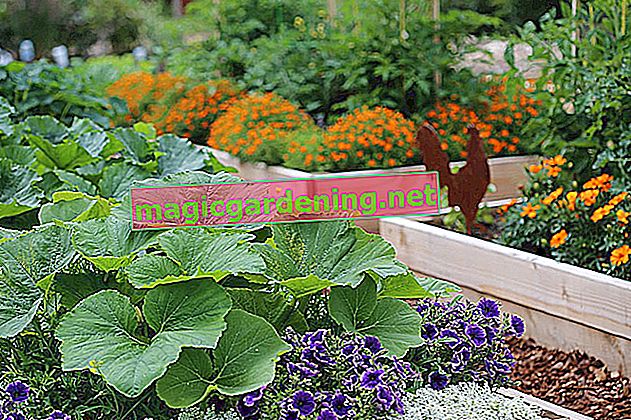
When is the best time to plant?
Like all flowering perennials, lupins should be planted in early fall. They will then reliably bloom for the next year. You can still plant early plants in spring.
also read
- Plant lupins as ornamental perennials in the garden or in containers
- Beautify the terrace with lupins in a pot
- Lupins provide color in the garden for several years
What should the location and soil be like?
- Sunny to partial shade
- Wind-protected place
- Warm location
- Permeable soil
- Not too nutritious earth
- Slightly acidic soil
The more sun it gets, the more comfortable the lupine feels. The location must be sheltered from the wind so that the long panicles don't break so quickly.
The perennial does not get soil that is too wet. Mix in some sand if necessary.
Which plant spacing is recommended?
Lupins shouldn't be too tight to prevent powdery mildew. Keep a distance of about half a meter between the plants.
How are lupins properly planted?
Dig a planting hole that is at least as deep as the root the plant formed. Insert it carefully so that the root does not kink.
Tread the soil gently and water the lupine more often for the first few days. Avoid waterlogging. The lupine does not need to be poured later.
When is the lupine's flowering time?
The main blooming season of the lupine lasts from late May to August. You can achieve a second flowering period if you always cut off all faded inflorescences immediately.
Can lupins also be brewed in a pot?
Lupins develop very long roots. This is why you should choose smaller varieties if you plan to grow lupins in pots. The pots or tubs should still be as deep as possible so that the plant can develop its characteristic long inflorescences. When caring for in the pot, the lupine needs winter protection.
How are lupins propagated?
Propagation takes place via seeds, root division and cuttings. When collecting and sowing seeds, you must bear in mind that, unlike the seeds of yellow lupins, they are poisonous and do not belong in the hands of children.
The roots of the lupine become very long. That is why you have to be very careful when dividing the roots so that they do not break.
Which neighbors do lupins get along well with?
Lupins improve the nitrogen supply of the soil through their nodules on the roots. Therefore, they actually get along well with all flowers. They set special effects in addition to:
- sunflowers
- Roses
- delphinium
- Cosmea
- Colorful summer flowers
Tips & Tricks
Lupins look particularly beautiful as a background plant in the perennial bed. The flowers shine in many pastel shades and can reach a height of 120 centimeters in the garden. Smaller flower bushes are particularly effective in front of it.








